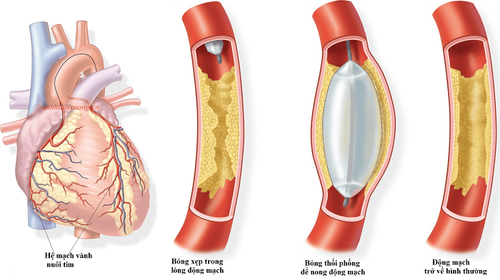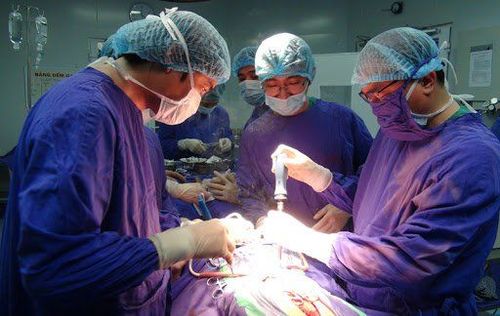This is an automatically translated article.
The article was professionally consulted by Doctor Vo Thanh Nhan - Cardiovascular Center - Vinmec Central Park International General Hospital.Angioplasty is a percutaneous coronary intervention technique, which helps to widen the coronary artery lumen to improve myocardial ischemia caused by narrowing atherosclerotic plaque. After balloon dilation, a stent is often placed to help support it, reducing the chance of narrowing of the coronary artery.
1. Concepts
The coronary artery system supplies blood to the heart muscle, when there is an accumulation of plaque in the coronary artery, causing coronary atherosclerosis. Atherosclerosis causes coronary arteries to narrow, reducing the blood supply to the heart muscle, when much narrowing causes angina pectoris, and especially if unstable atherosclerotic plaque can dislodge, causing embolism. coronary artery is called acute myocardial infarction. Acute myocardial infarction can be life-threatening if not detected and treated promptly.
Trắc nghiệm: Huyết áp của bạn có đang thực sự tốt?
Huyết áp cao hay thấp đều ảnh hưởng đến tình trạng sức khỏe con người. Để biết tình trạng huyết áp của bạn có thực sự tốt không, hãy làm bài trắc nghiệm sau đây để đánh giá.2. Indications for coronary stenting
Coronary artery stenosis from 70% on coronary angiography Stable angina that is not controlled despite optimal medical treatment Stable angina with evidence of myocardial ischemia and injury injury to a coronary artery that supplies a large area of the myocardium Unstable angina, myocardial infarction without ST-segment elevation. which is at high risk stratified ST-segment elevation acute myocardial infarction Angina pectoris occurring after coronary bypass surgery Symptomatic of restenosis after percutaneous coronary intervention
3. Contraindications for coronary stenting
Injury to coronary arteries that are not suitable for stenting such as: Severe diffuse damage, multiple coronary artery lesions, distal lesions... Coronary artery damage has a high risk of death if coronary arteries that is blocked during the intervention Bleeding status: Blood clotting disorder, low platelet count...
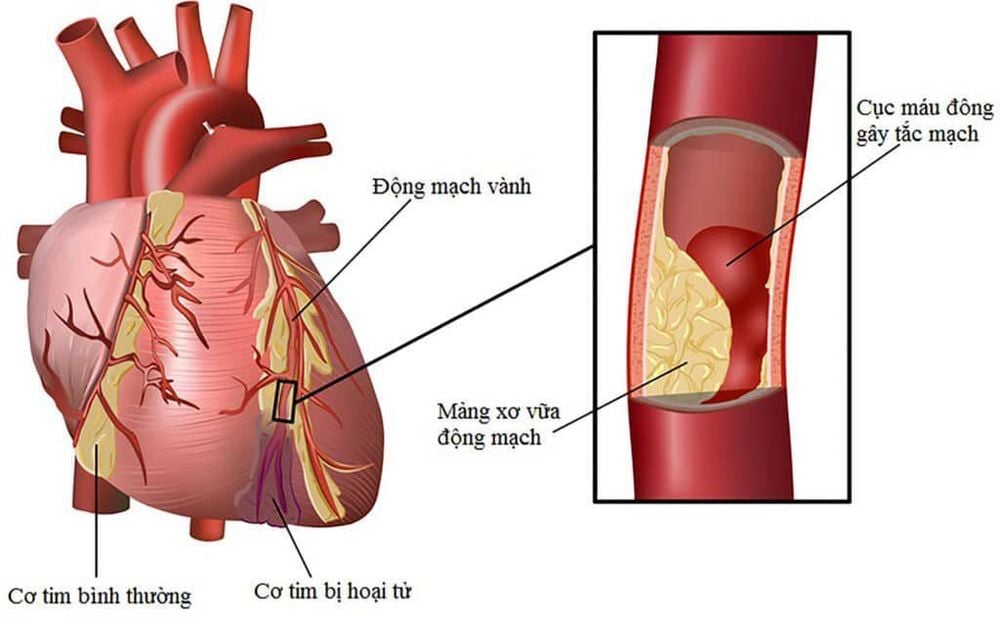
Patient does not adhere to treatment before and after intervention procedure Patient has re-stenosis in many places after intervention
4. Coronary stenting procedure
4.1. Prepare the patient
Patients are fully explained with information and risks after the procedure. Check for diseases such as: Diseases of coagulation disorders, allergy to contrast.... kidney, chronic lung disease... The patient is given antiplatelet drugs before the procedure
4.2. Do the trick
Step 1: Open the way into the blood vessel
Disinfect the blood entry site Open the way into the patient's blood vessel through the radial or femoral artery Step 2: Insert the interventional catheter
After selective coronary angiography , locate the need for intervention Place the interventional catheter in the coronary artery lumen Connect the interventional catheter tail to the manometer line
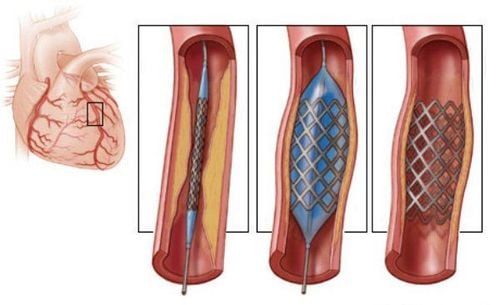
Carry out balloon angioplasty to widen the lumen of the lesion Place a stent to prevent re-stenosis of the coronary artery lumen after balloon angioplasty Check that the stent has expanded good or not After the stent is placed, take a coronary angiogram to make sure there are no complications Finally remove the wire from the coronary artery
5. Complications of coronary stenting
Possible complications after coronary stenting include:
Arrhythmia Re-narrowing of the artery lumen Bleeding Hemopericardium due to separation, coronary artery rupture, coronary perforation Cerebrovascular occlusion, embolism femoral, radial... Aortic dissection due to arterial wall Acute myocardial infarction after procedure Acute renal failure due to contrast agent Rare infection
6. Where is the coronary stent placed?
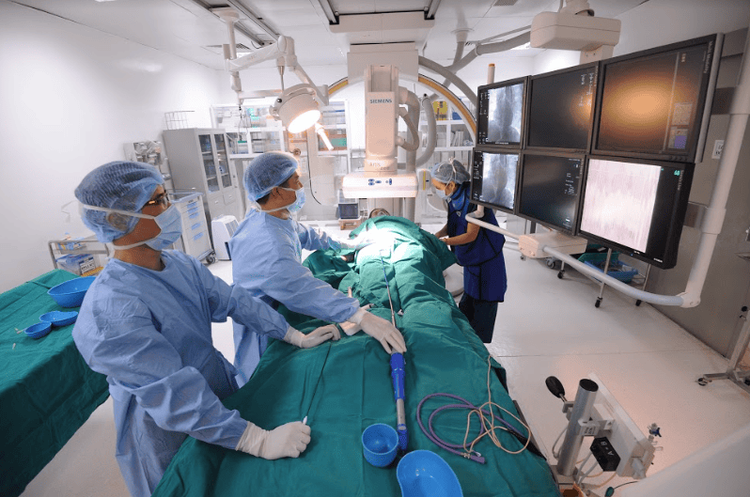
Angioplasty and stenting technique requires a high level of professional experience from the doctors and the cooperation from the patient for the surgery to take place successfully.
Vinmec Central Park International General Hospital (HCMC) applies a full-service cardiovascular disease treatment model. This is a treatment modality being carried out at the leading Cardiovascular Centers of the US and many other developed countries such as Mayo Clinic, Cleveland Clinic, Pennsylvania....
Cardiovascular Package Program (BUNDLE) PAYMENT ) will be applied with one of 4 techniques:
TAVI intervention Coronary interventional stenting Aortic bypass surgery Ventricular septal surgery For patients who are indicated for angioplasty and stenting, who Patients will be consulted to choose and sign a contract to use the appropriate package. The contract includes the treatment method, length of hospital stay, number of follow-up visits and a fixed cost that the patient has to pay for the duration of the treatment.
Package treatment model is one of the activities to realize the policy of "Patient is the center" at Vinmec International General Hospital. The outstanding advantages of the full-service cardiovascular treatment model at Vinmec Central Park include:
Multi-specialty treatment: Patients will have a comprehensive and thorough treatment plan by a multi-specialty team, coordinating Treatment regimens are standardized according to the standards of prestigious cardiovascular associations in the world. Patients have direct access to the most appropriate and optimal regimen, avoiding the need to test many methods. Different treatments are costly or reduce the effectiveness of treatment Increase recovery, reduce hospital stay Peace of mind about the treatment plan and proactive about treatment costs Vinmec Central Park Heart Center is one of key centers of Vinmec Health System, gaining JCI global certification. The center is invested with modern equipment and well-trained human resources, including many leading experts in the field of Cardiology such as:
Professor, Doctor, Doctor Vo Thanh Nhan: First expert Vietnam's pioneer in percutaneous aortic valve replacement (TAVI); pioneer in the implementation of new and specialized cardiovascular techniques: MitraClip, StentGraft... Dr., Doctor Nguyen Luong Tan : Expert in adult and pediatric cardiothoracic surgery. The doctor is well-trained in the country and many centers have the world's leading medical background such as: France, Australia... Master, Doctor Nguyen Duc Hien: Has more than 12 years of experience in the field of cardiology especially especially Cardiovascular and thoracic surgery.... Vinmec Central Park Heart Center has successfully treated over 98% of cases of TAVI intervention, open heart surgery, painless open heart surgery by combination ESP technique, effective even with severe and elderly cases. Vinmec Central Park is also the first hospital in Vietnam to be recognized as an independent US standard TAVI intervention center.
Please dial HOTLINE for more information or register for an appointment HERE. Download MyVinmec app to make appointments faster and to manage your bookings easily.





